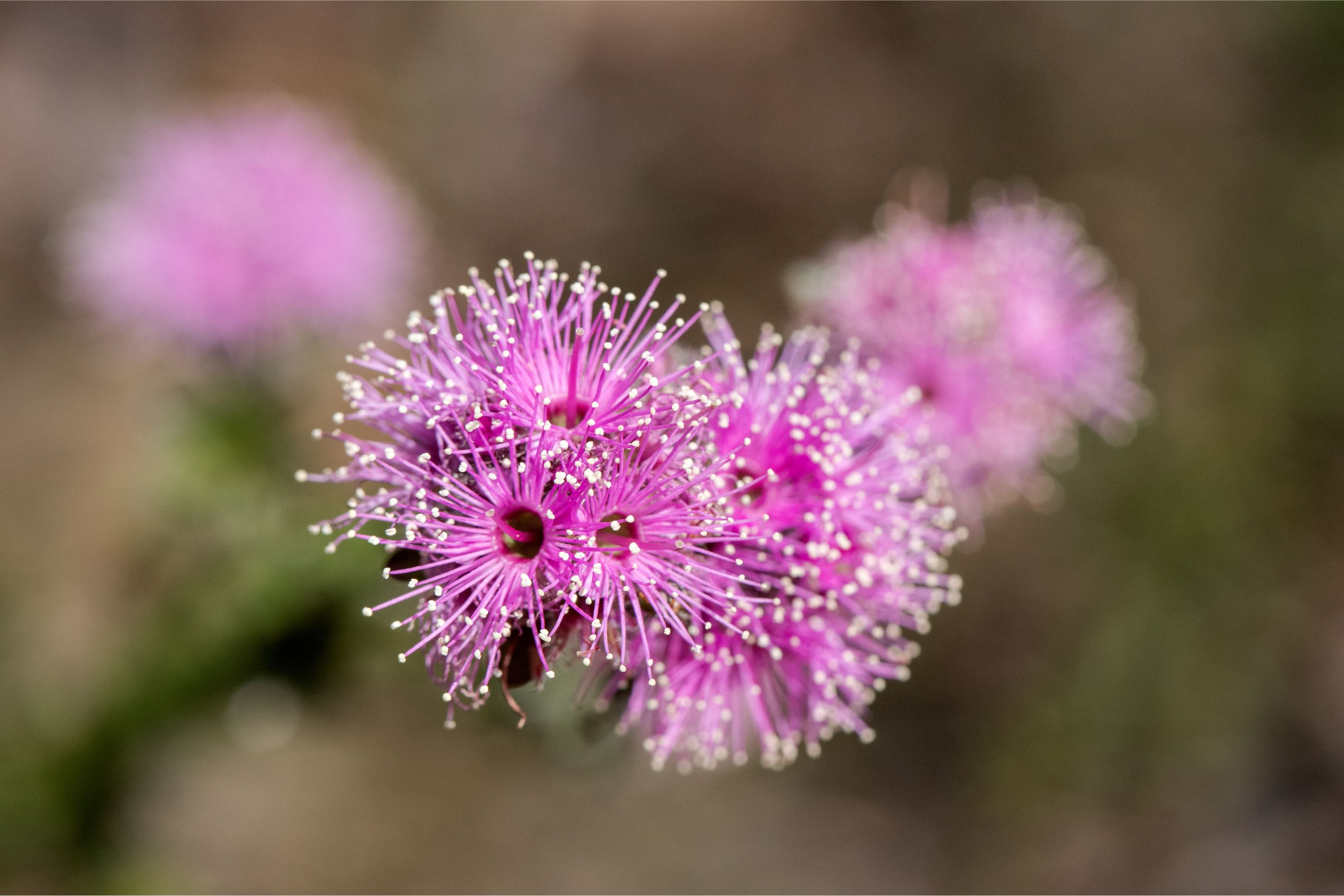Kunzea opposita
(Kunzea opposita)

Description
Kunzea opposita is a plant in the myrtle family, Myrtaceae and is endemic to eastern Australia. It is a spindly shrub which has small leaves arranged in opposite pairs, and pink flowers with five petals and many stamens, the stamens much longer than the petals. It usually grows in woodland or on exposed cliffs. Kunzea opposita is a spindly shrub which grows to a height of 0.5–3 m (2–10 ft) with its young stems covered with fine hairs. The leaves are mostly arranged in opposite pairs along the branches and are narrow egg-shaped, 1–3 mm (0.04–0.1 in) long and less than 1 mm (0.04 in) wide on a very short petiole. The leaves are glabrous. The flowers are arranged in rounded groups of five to nine on the ends of the branches. There are lance-shaped to egg-shaped bracts which are 2–3 mm (0.08–0.1 in) long and 1–2 mm (0.04–0.08 in) wide, and smaller paired bracteoles at the base the flowers. The floral cup is 3–4 mm (0.1–0.2 in) long and hairy. The sepals are triangular to egg-shaped, 1–1.5 mm (0.04–0.06 in) long and sometimes hairy. The petals are pink, oblong to broadly egg-shaped, about 1.5 mm (0.06 in) long and there are 40 to 50 stamens in several rows. The stamens are 3–5 mm (0.1–0.2 in) long. Flowering occurs in August to November and is followed by fruit which an urn-shaped capsule about 3 mm (0.1 in) long and wide with the sepal lobes attached. Kunzea opposita was first formally described in 1867 by Ferdinand von Mueller and the description was published in Fragmenta phytographiae Australiae.The specific epithet (opposita) is a Latin word meaning "on the other side" or "contrary". Plants in the genus Kunzea are shrubs or small trees, usually with their leaves arranged alternately along the branches. The flowers are arranged in clusters near the ends of the branches, which in some species, continue to grow after flowering. The flowers of most species lack a stalk but those that have one are usually solitary or in groups of two or three. In some species, the flowers are surrounded by enlarged bracts. There are five petals, five sepals and a large number of stamens which are always longer than the petals. The fruit is a usually a woody capsule. Kunzeas are similar to species in other genera of the Myrtaceae, especially Leptospermum but are distinguished from that genus by having stamens that are longer than the petals.
Taxonomic tree:







